I experienced my first totality in spring 2006, when I organized an expedition to the Mediterranean coast of Turkey for a group of almost 40 fellow amateur astronomers. It was a great time and an absolutely incredible experience, and I was hooked. Since then I anxiously waited for the next opportunity to chase the lunar shadow. I tried to organize a similar trip to China in 2008 – but weather prospects for observations from the mainland were not very promising, and other options were well beyond our budget. Thus, I found peace in the thought that, regardless of where on this planet I end up being by then, I have to come to the US to be in the shadow on August 21, 2017.
Conveniently over-fulfilling my initial plans, I actually moved to the Midwest of the United States a couple years before the big date. And that’s when the planning began. I was not looking to use any sophisticated equipment for observing or imaging – I just wanted to enjoy the magical spectacle. To increase my chances for success, I chose western Nebraska as a base location, as it features significantly lower humidity due to higher elevation and closer proximity of the Sandhills region to the Rockies. I also planned to be mobile, as weather in Midwest can be quite unpredictable. Thankfully, a decent road network, particularly along the path of totality, made it very realistic. In terms of accommodation – I chose camping, as it gave me more flexibility, and I was able to reserve the campsite in a state park exactly 365 days in advance with no issues.

Mike Zeiler is a GIS professional and produces phenomenal eclipse-related graphics.
In early September of 2016 I went on a weekend trip to western Nebraska to scout the location of my base camp and observing spot for next summer. For camping, I chose Lake McConaughy State Recreation Area just north of Ogallala, NE. It is a gorgeous artificial lake with wide sand beaches, and it also has a unique feature (at least for Nebraska parks): camping is allowed anywhere, even outside the campgrounds. For me it meant that, regardless of how many people will converge to this location in anticipation of the eclipse – I will still have a spot for my base camp. During that same trip I found an observing spot slightly north of Arthur, NE, that would be right in the center of the path of totality.
Reservations are made, gear is packed, logistics are carefully planned – and the adventure has begun. We headed out westward on Interstate 80 on Saturday morning (well, not as early morning as initially planned, as cramming everything into the car took quite some time). After an approximately five-hour drive, we rolled into our campsite at the Lone Eagle Campground on the north shore of the lake. To my surprise, the place was not packed at all, and looked like on any regular summer weekend. Having heard so many stories about problems with reservations and astronomical prices for low-to-medium range accommodations in some places, I genuinely expected to see a far larger crowd! (Not that I was disappointed though – I generally don’t like crowds).

After setting up the camp and completing a short walk along the lake, we headed to the park’s visitor center, where I was scheduled to give a talk to the local crowd. I always enjoy sharing my experience with the public, and already gave an eclipse-related talk earlier in April that year as part of the Nebraska Science Festival. This talk, of course, was more hands-on and provided more specific observing details, since it happened less than two days before the event. Great time and a bunch of good questions from the public, followed by small-group discussions – outreach is always a very rewarding activity! One of my biggest missions in the eclipse outreach, beside promoting safe solar observing techniques, was to convince people that seeing 99% phase of the eclipse is not even nearly the same as to experience the totality. Without any exaggerations, it’s like eating a mediocre burger in a sketchy roadside diner compared to a luxurious dinner in a Michelin-starred restaurant!

We had Sunday as a recreation day. That included a late wake-up (well, “late” of course has different meanings for different people 🙂 ), and some quality time at the beach – walking, swimming, playing Frisbee – you name it. It was great to have some rest from an intense Saturday, and replenish energy before the big day tomorrow.

Of course, one important task that I had during the days leading to the trip, and particularly on Saturday and Sunday, was keeping a close look at the weather forecasts for Monday morning. And the closer we were getting to the decision point, the more issues transpired in the projected cloud cover maps. While the Saturday night forecast had approximately 20% cloud cover for our area, it increased to 40-45% by Sunday night. It looked even less optimistic farther east – see the general thunderstorm outline (light brown dashed line) and potential severe thunderstorms (yellow hatched area) on the forecast chart below. However, forecasts were much more favorable for eastern Wyoming.
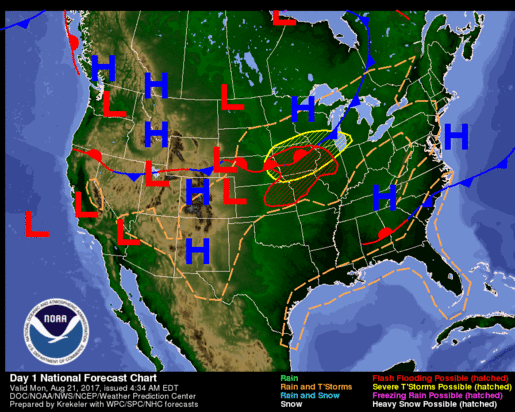
Closer to midnight on Sunday, the decision was made: we are driving west and trying to escape the clouds. That was a significant last-minute change that included driving additional 200 miles (one way). Additionally, we did not have an established observing spot. However, we came up with a relatively safe plan: following Hwy 26 into Wyoming eventually brought us inside the path of totality, and a decent stretch of the road ran more or less inside the path. Thus, even if we are not successful in finding a good vantage point – we at least were not risking to completely miss the totality.
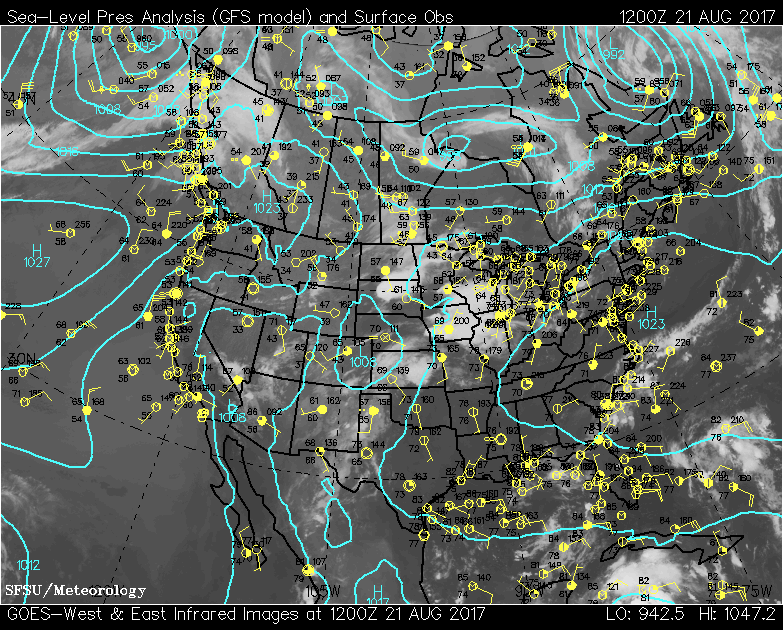
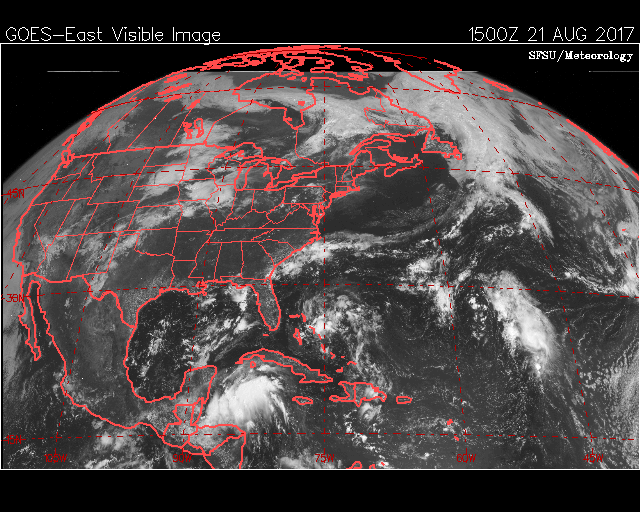
We woke up at 3.30 AM on Monday, hopped into the car, and hit the road. It was a weird drive: the fog was so thick that I could barely see a few dozen yards ahead. At one point one of my friends who was my navigator on that stretch pointed at the rear-view mirror and said: “I bet all those cars are doing the same thing as we are”. Indeed, you will seldom see a dozen of cars braving through dense fog (all in the same direction) at 4 AM in the morning with no reason!
We crossed the state border at sunrise, and that’s when the fog magically disappeared, opening up a deep-blue cloudless sky – certainly a good sigh for us today! We made a quick stop at the gas station, and you could only hear one topic of conversation, be it in the line to get some coffee, gas, or restroom – the Great Solar Eclipse in just a few hours from now. And the lines were remarkable – people came here from every corner of the country and abroad. Some reports that I later read claimed that the population of Wyoming almost doubled in a few days around the eclipse.


We first thought of going to Glendo, WY – a little town on the Interstate 25, where an eclipse observing party was announced in a local airport (much like a famous event planned in St Joseph, MO – where unfortunately people were mostly out of luck weatherwise). Driving through a few first towns in Wyoming along Hwy 26, however, we saw how packed are all city parks and even parking lots, and eventually decided to just turn north (towards the center of the totality path) into the countryside and look for a place to park there. We later found out that it was a great call, as I-25 was heavily jammed for hours after the eclipse.
After some driving around and several unsuccessful attempts, we rolled into a driveway that had a sign “parking for eclipse” not far from Hartville, WY. The owner of the property was very nice, and let us choose the observing spot that we liked the most on a generously large piece of land that he owned (for a nominal charge, of course).
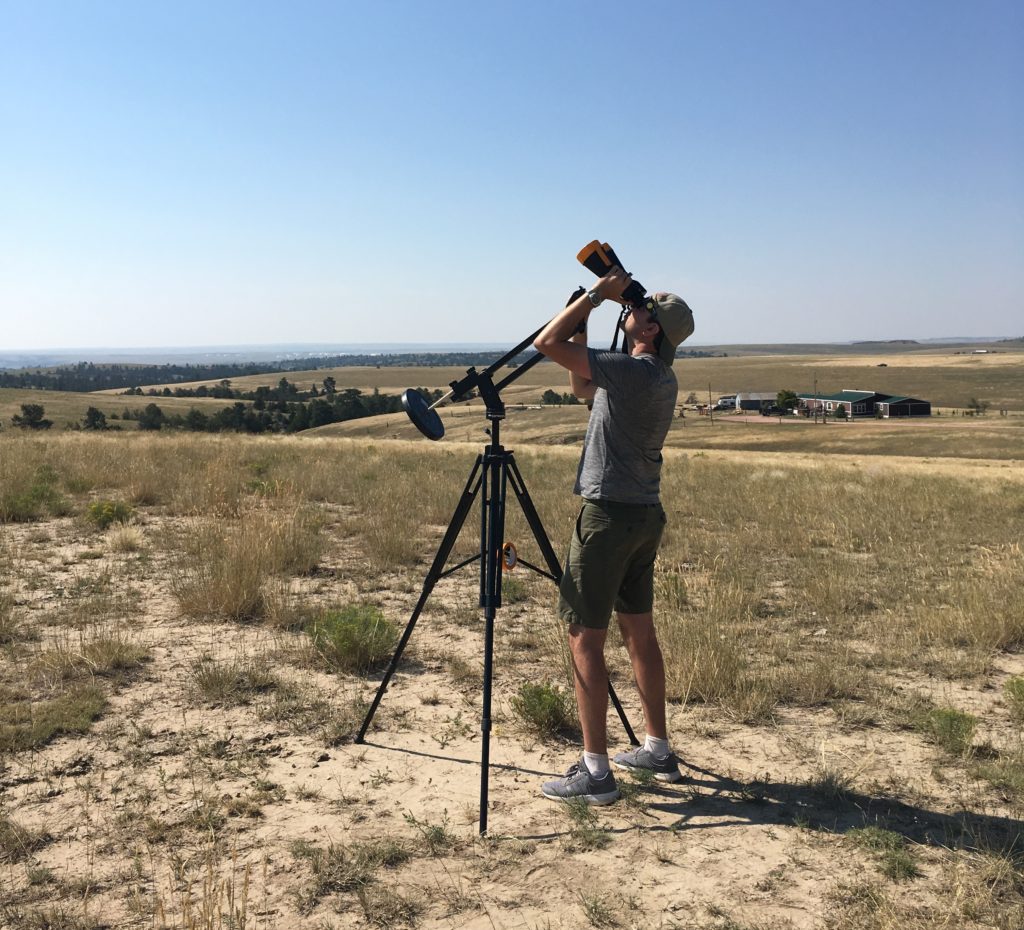
Soon after we set up and treated ourselves to a well-earned breakfast, it was time to take a peek into the eyepiece and witness the first contact – the moment when the lunar disk first touches the Sun, and starts carving it into a crescent, little by little.
It’s funny how I am always excited about the first contact, and even the smallest phases in the very beginning – and how 90% after the totality leads to almost no emotional response at all. And it’s not only about me – I observed the same for many people I shared the experience of being in the shadow with. Most probably the expectation building up in the very beginning and eventually leading to totality drives everyone’s emotions up. It is also because the totality is just so emotionally saturated that there’s nothing left for much of what’s coming immediately after: your brain still tries to make sense of what just happened, and process the surreal views that you just witnessed.
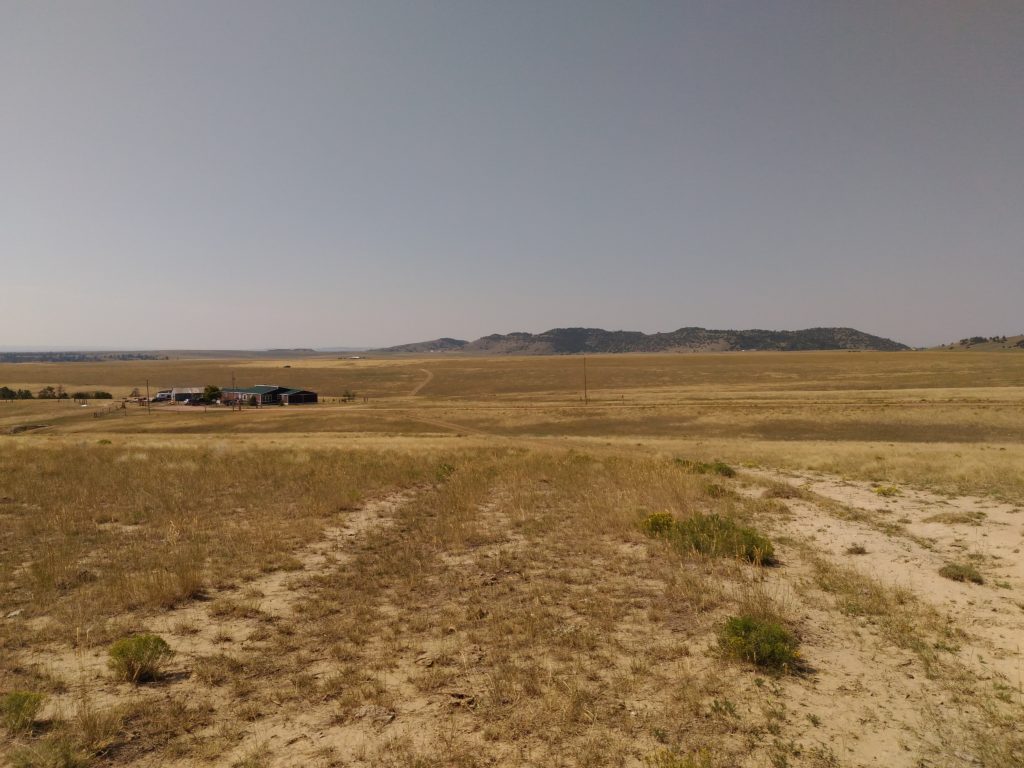
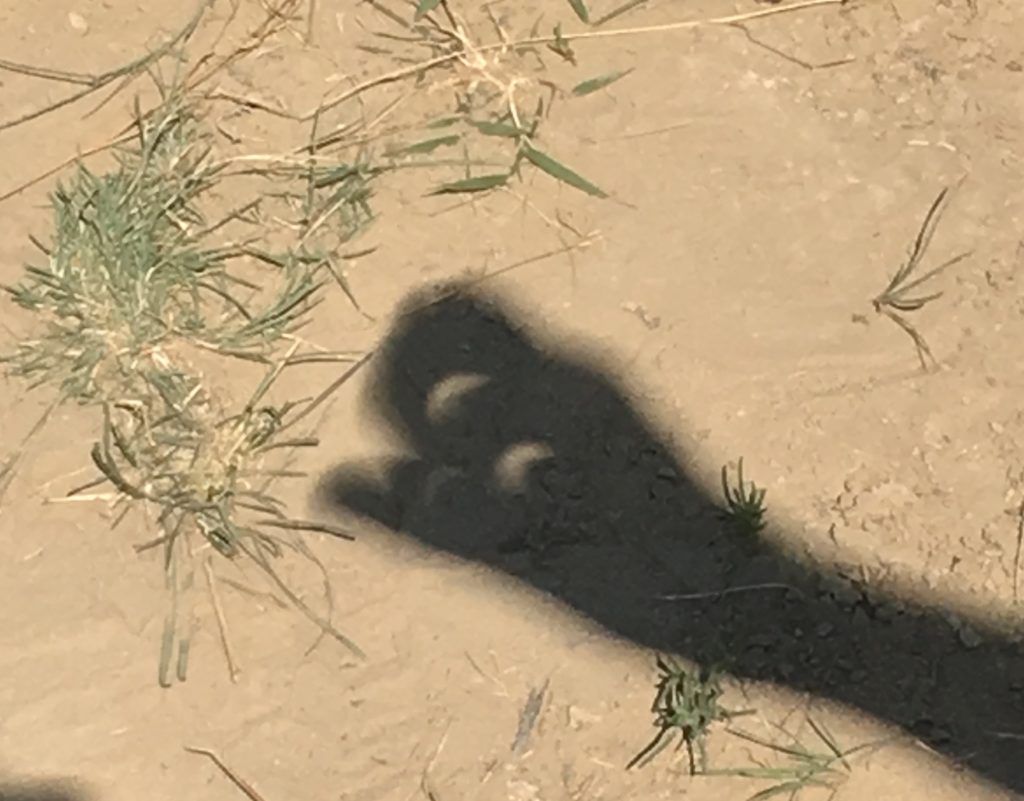
Time flew by, and the lunar shadow came before we knew it. It is certainly an advantage to observe the eclipse from the top of the hill with a clear open horizon. This way, all the incredible visual effects are right in front of you – and the first of them will be the dark shadow of the Moon that races towards you from the west at the speed of over 1000 mph.
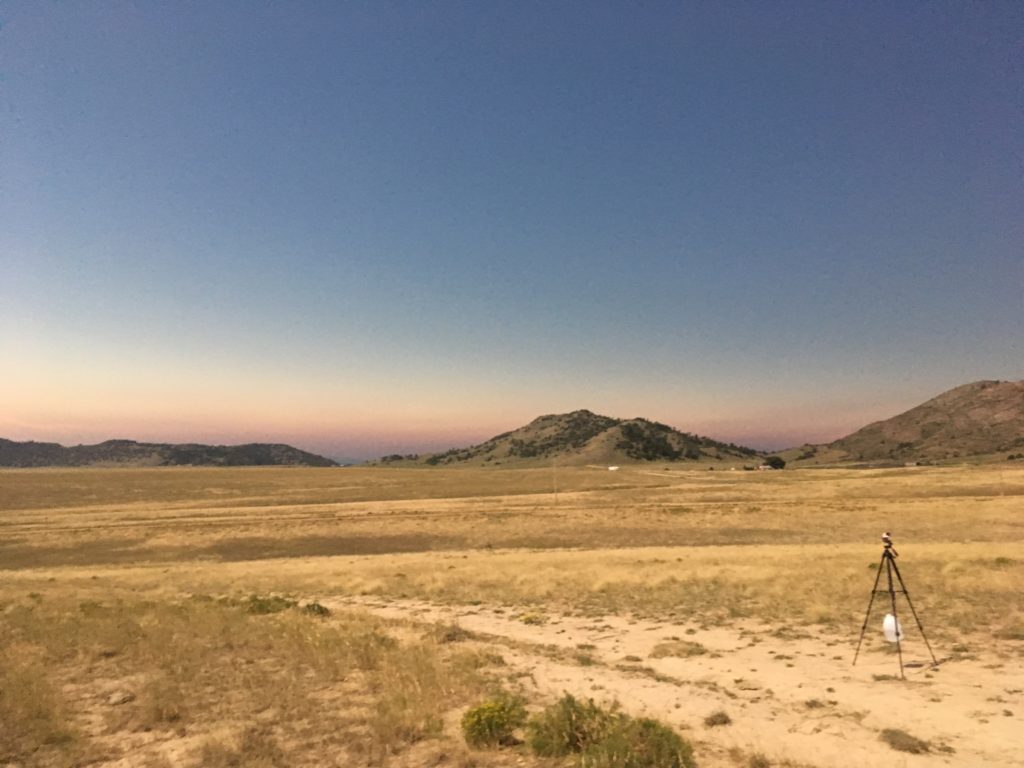
And then magic happens. The bright disk of the Sun turns into a ring with an incredible diamond on its right side, and then the day turns into night. It varies for different eclipses, but subjectively it is as dark in the middle of totality as it is at night approximately 1-1.5 hours after the sunset, with the brightest planets and stars emerging in the sky. But there’s a big difference. Usually we see the glare of the dusk in the western part of the sky. During the totality, the “fire ring” of the golden solar glare shines all around the horizon! The path of totality is only about 100 miles wide, thus the glare that you see around you comes from places where Sun is not totally eclipsed by the Moon.
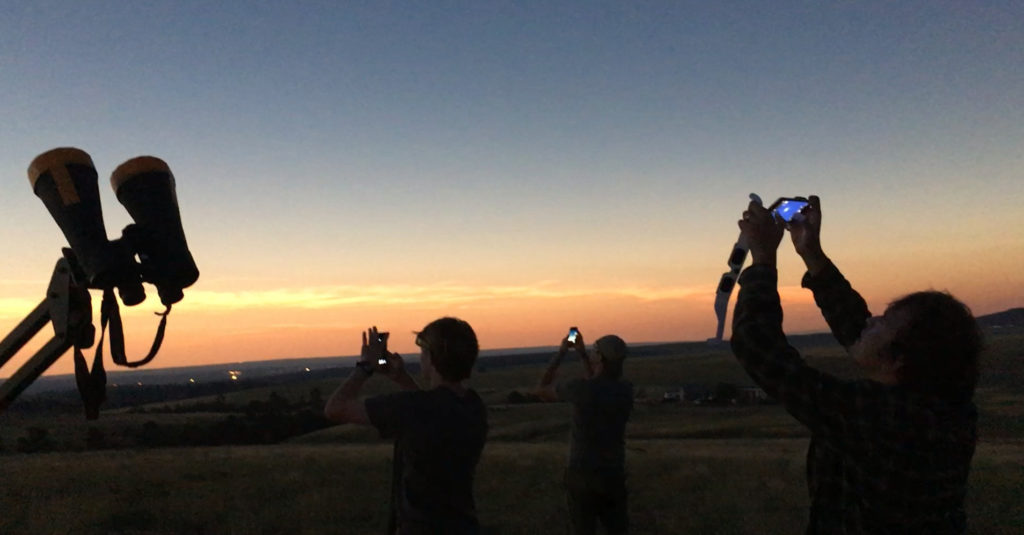
And then it was over. It only took a little less than 2.5 minutes to create a majestic, out-of-this-world spectacle, but it takes much longer for thousands of people to comprehend the significance of the phenomenon that they witnessed. We spent several minutes in silence, each with a kaleidoscope of thoughts, emotions and impressions of their own. Then we broke the silence, but it felt like we didn’t need words to express what we felt about our recent experience.
We decided to leave shortly after the totality. When we just left the dirt road from the farm and started our drive to the highway, a song played in our car that perfectly fit the moment. “Here comes the Sun…”
Even though we spent approximately 3 hours more for our drive back to the base camp on Lake Mac, it can be considered a success given all the horror stories about traffic jams on some interstate highways. In fact, once we crossed the state border back to Nebraska, we hardly experienced any unusual traffic at all.
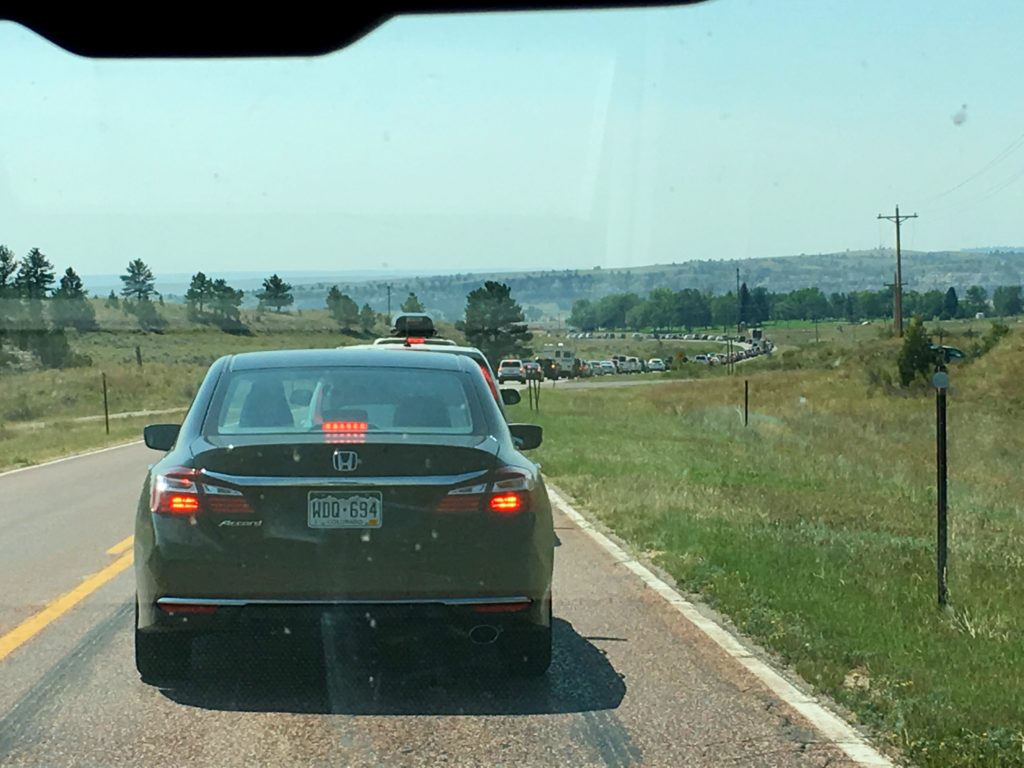
One can hear hundreds of stories and see thousands of pictures and videos – but they will never be able to really express all the scale and magic of being in the shadow. I believe that experiencing the totality – at least once in their life – should be on everyone’s bucket list. It is truly the Nature’s most spectacular and majestic phenomenon, that the citizens of Earth are privileged to be able to witness due to an extremely rare coincidence. I am already counting days to the next eclipse adventure – and where will you be on April 8, 2024?